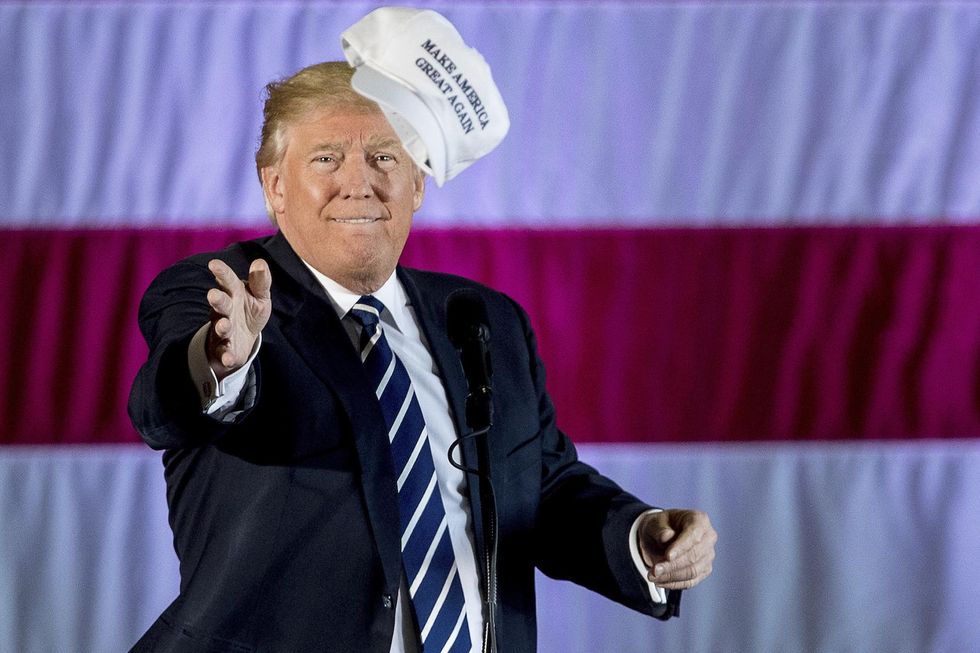
President-elect Donald Trump throws a campaign hat into the audience while speaking at a rally in a DOW Chemical Hanger at Baton Rouge Metropolitan Airport, Friday, Dec. 9, 2016, in Baton Rouge, La. (AP/Andrew Harnik)

President Donald Trump isn't wasting any time getting down to business, and sources say he already plans to withdraw from the Trans-Pacific Partnership trade deal on Monday.
Trump promised many times on the campaign trail that he would make the move, calling it a potential disaster for the country and maintaining that the deal is unfair to American workers. In June 2016, he said of TPP, "It's a rape of our country. It's a harsh word, but that's what it is – rape of our country."
TPP is a trade agreement between 12 countries situated along the Pacific Ocean, not including China, that was negotiated for seven years and finally signed in February 2016, though it has not yet been ratified by Congress. Most international trade agreements are ratified by a fast-track Congressional yes/no vote, but Congress has intentionally left TPP out of negotiations. Senate Majority Leader Mitch McConnell said in August 2016 of the trade agreement, "It can be massaged, changed, worked on during the next administration."
Because Congress has not done anything to ratify the long-negotiated agreement, Trump's executive order could unilaterally remove the country from the trade deal. If the United States is removed from the agreement, the agreement will likely dissolve. The final chapter of TPP states that the agreement can only be implemented if six of the original 12 countries have ratified it, and those countries participating must represent 85 percent of the combined GDP of the original 12 countries.
The goals of the agreement are to "promote economic growth; support the creation and retention of jobs; enhance innovation, productivity and competitiveness; raise living standards; reduce poverty in our countries; and promote transparency, good governance, and enhanced labor and environmental protections."
Trump also plans to sign an executive order stating he plans to renegotiate the North American Free Trade Agreement, although his path towards any modification of NAFTA will be significantly more difficult, from a legal perspective. NAFTA is an agreement between the United States, Canada and Mexico that allows the three countries to trade freely without imposing tariffs, and also is intended to protect intellectual property rights on traded products.
The NAFTA agreement began Jan. 1, 1994, and was signed into law by President Bill Clinton. Trump demonstrated his intent to completely redraw NAFTA, telling supporters on Twitter in October 2016, "I will renegotiate NAFTA. If I can’t make a great deal, we’re going to tear it up. We’re going to get this economy running again." Unlike the TPP, NAFTA was ratified by Congress and thus constitutes the law of the land under Article VI of the constitution. It is unclear how Trump would legally be able to modify or nullify NAFTA without Congressional agreement.